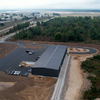dowlingm
Senior Member
The original article and this one says battery trains are being procuredDo you have a source that identifies this railway as using battery power ?

New battery-electric trains announced for Fife and Borders railway - Rail UK
New battery-electric trains announced for Fife and Borders railway - Rail News
 railuk.com
railuk.com














